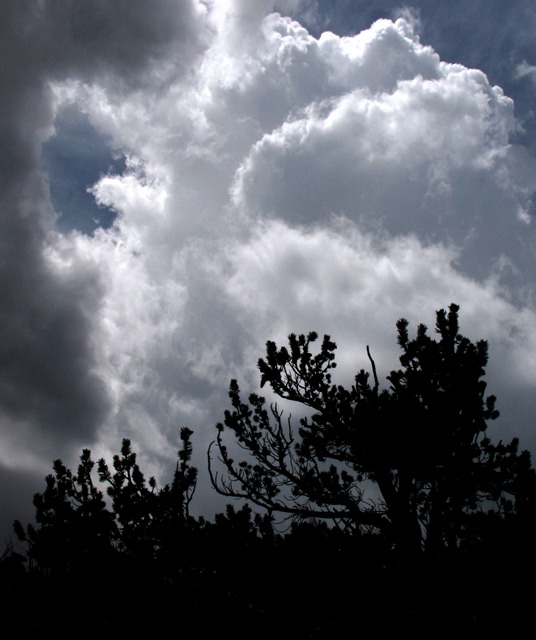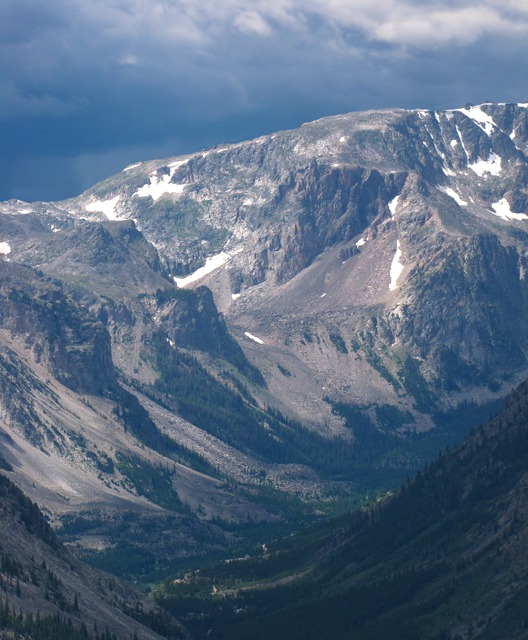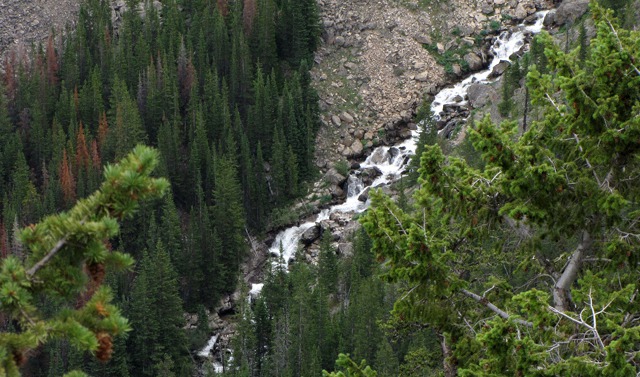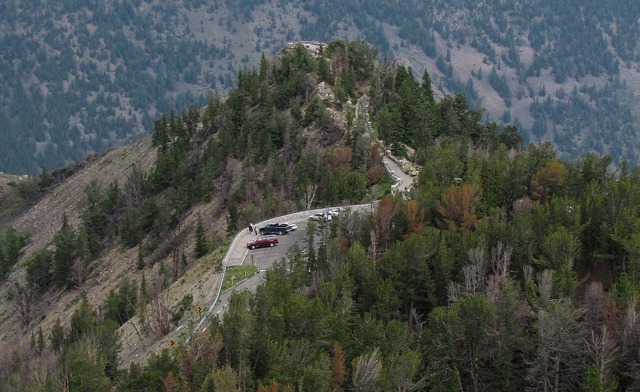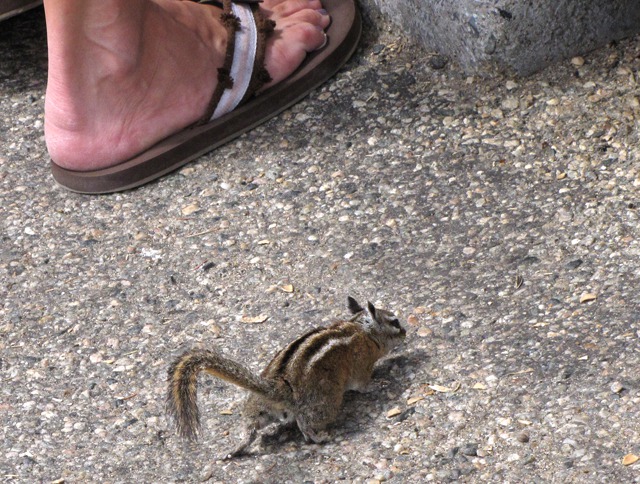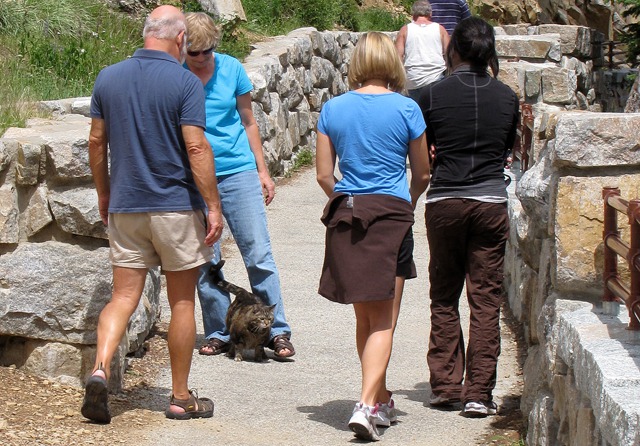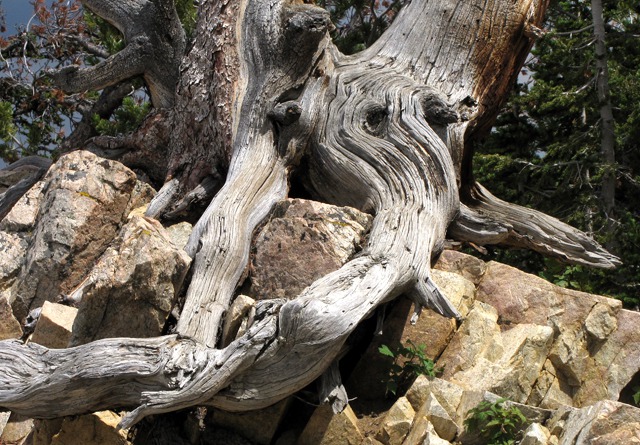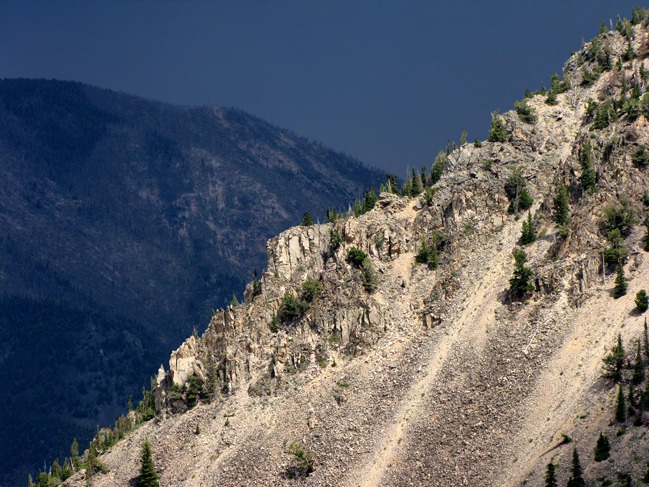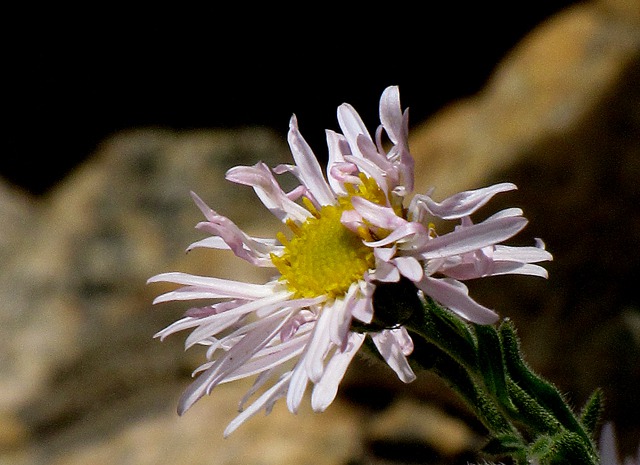Beartooth Highway, by Louise: August 3, 2009: We set out today from Bozeman for home and decided we wanted to drive US HWY 212, "the most beautiful highway in America" as Charles Kuralt dubbed it, over the Beartooth Pass into Cody WY. The sky was full of huge dark storm clouds; the mountains are high enough to make their own weather out of whatever the jet stream brings their way.Highway Lookout: Our first stop was the highway lookout at Tolman Mountain, still in Montana, in the Custer National Forest. Perched on a narrow spine of granite, the lookout provides breathtaking views of Rock Creek canyon and the Beartooth Mountains.
The parking lot was two-thirds full when we arrived. The motorcycle rally is on in Sturgis SD, so lots of bikers on the road. Over the years they've learned how to travel in this country -- rain gear, warm coats, leathers. Save the shorts and tank tops for Sturgis!Leesha Strides Out: Did Leesha want to get out? Oh, most definitely! She hopped out of the car and marched down the path. She is, I'm afraid, fat. Everyone she meets immediately comments on her size -- "What a huge cat!"
On this path, chubby chipmunks fearlessly sought tourist treats. "How cute!" the walkers exclaimed as the animals dashed along the rock walls. I carried Leesha because I didn't want her to chase them -- she'd never catch one, but she could easily end up someplace where we couldn't retrieve her. Notice how casual this little guy is only a few inches away from a human foot.
And then, funny thing -- the chipmunks and squirrels disappeared! Even though I was carrying her, the little critters seemed to know that a carnivore was in the vicinity.
I put her down, and on she marched, sniffing here and there, and stopping to meet the people walking the trail. As always, she and I stayed very close together. Even without her leash, she stays within two or three feet of me. And here it came -- "Did she eat all the squirrels? She's sure big enough!" I hope you wouldn't say things like this to any plump friends you have!
A German family stopped to pet her; their cat was back in Germany, and they missed him. Then a man from New Jersey stopped to talk to her; he had recently lost his cat, and she reminded him of his lost friend. Leesha loves to visit with people!On the way back to the car, Leesha needed to rest and sniff and explore. Cats don't usually go too far without stopping for something!She loved prowling around this old tree root -- lots of rodent smells to be smelled.
Alpine Ecology: The ecology up here is beautiful! The wildflowers are just blooming; the high altitude (10,000 feet and more) and late snow melt make August the best time for flowers. This buckwheat turns pink and then red in fall and grows on grassy slopes and open forests in western Montana. It's a lovely garden plant that requires very little water; it will die with too much.
I use Wildflowers of Montana by Donald Schiemann to identify these flowers. He says there are ten species of lupine and twelve arnica species in Montana. These could be blue lupine (Lupinus argenteus) and mountain arnica (Arnica latifolia), but I'm not sure enough to make the call. Lupine makes a good garden plant if your soil is slightly acidic. It's not for heavy alkaline clay like I have in my back yard. Arnica also likes moist, acidic soil. The soil in pine forests is acidic from the needles, and forest edges and meadows are the preferred habitat for these beauties.
There are thirty-six species in this genus, the largest sunflower genus in Montana. Fleabane brings color to your yard as well as bees and butterflies and does well in dry soils. It will self-seed and spread wherever you let it. And what a name!
Now it's back in the car and on down the road to the next adventure in the Sunlight Basin.
Louise with photos by Brian
text and photos copyright GoinMobyle, LLC 2009


